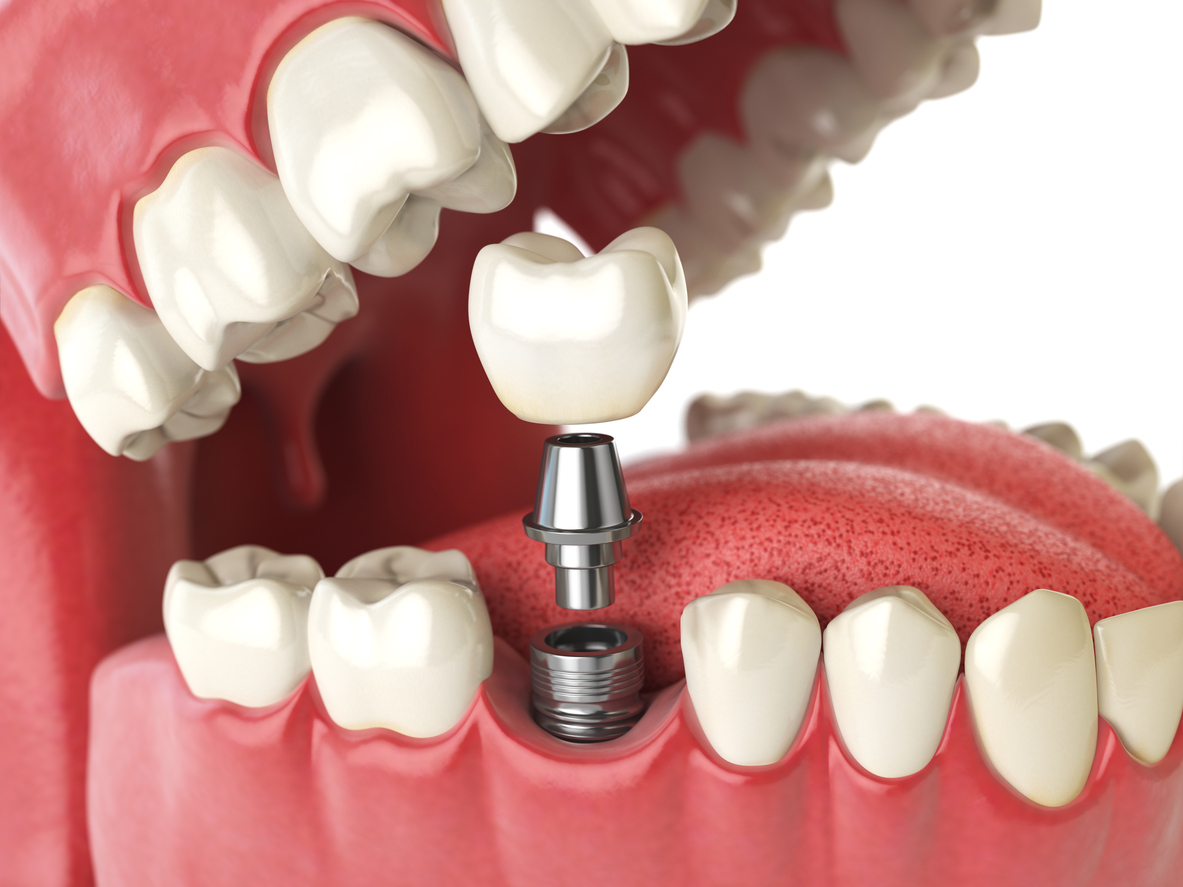There are three main steps before inserting the implants; pre-implant testing, prosthesis design, and planning the surgery.
- • Pre-implant testing
Before any intervention, in-depth testing is needed; this is the pre-implant testing.
It involves exams.
What exams are needed before inserting the implant?
- • Prosthesis design
- • Planning the surgery
• Many cases require a CT scan to get a better understanding of the bone volume and density in the implant zone. Based on the results, especially the bone topography, the dentist chooses the implant length and diameter.
• The patient may need to undergo blood tests, to ensure that the bone metabolism is appropriate and that their coagulation speed is good.
Next the prosthesis is designed.
The implant will support a prosthesis, which should be aesthetic and functional. This future prosthesis will guide in implant insertion: this is the prosthesis design.
It is very useful when the design applies to several teeth, the analysis will thus be thorough, and models or guides will be created. These will make it possible to anticipate and predict the future position of the prosthetic teeth in the mouth on a model or in the mouth.
In the mouth, a dental exam will be needed to evaluate the zone where the implant will be inserted. Any potential cavities or gingivitis will be checked to treat them as quickly as possible.
The dental surgery will study the future implant insertion conditions, once the prosthesis design has been validated. They will analyse the bone volume to determine whether a bone graft is needed, as well as the length and diameter of each implant.
Today dentists can quickly and easily visualise the surgery using implant insertion planning software. The implant treatment will thus be defined and support the success of the treatment. For complex cases, a surgical guide may be created. This planning will ensure the reliability and safety for the patient.
Advantages
• Implants ensure bone stimulation of the extraction site which prevents bone resorption.
• The crowns are attached to artificial roots and are never removed.
• The adjacent healthy teeth are not damaged.
• This treatment is aesthetic, functional, and long-lasting.
• These three steps will make it possible to guarantee the best result.
• X-rays and CT scans are essential exams before inserting the dental implants.
For more informations or to book an appointment with
Dr Antoine DISS – Dentist in Nice (France), please contact us by email or call 0033 492 145 145

